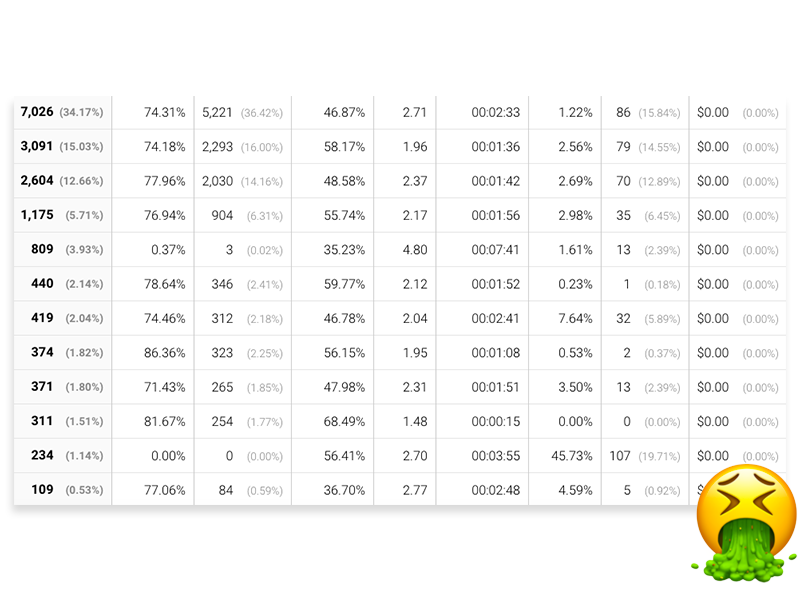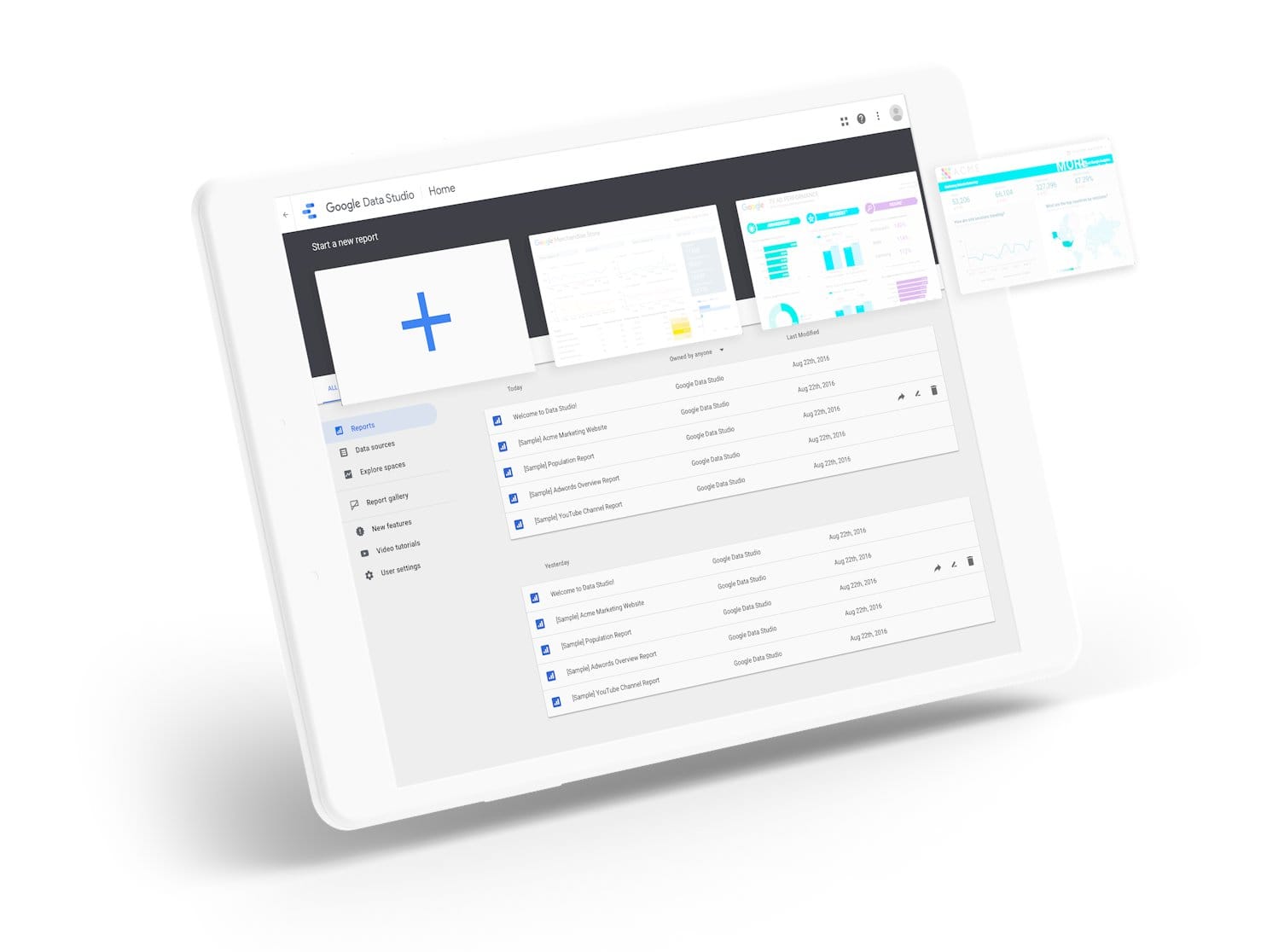The Art of Data Storytelling
I’ve used a variety of means of creating Analytics reports over the years, and in my work with various teams across many industries, I’ve have seen just about everything.
From dedicated reporting web apps like Klipfolio and Cyfe to Google’s own Dashboards and Custom Reports and even the old-school Doc, Spreadsheet, or PowerPoint solutions, there’s no shortage of options when it comes to data reporting.
And therein lies the problem. With so many ways to share analytics data, it can be easy to feel a bit lost.
The Problem with Data
You see, data by itself and without context, is relatively meaningless. Have you ever sent an export from Google Analytics to a client or team member and gotten the question, “Well, what does this mean?” Sure you have.
And who can blame them? You’ve just sent them a table full of numbers, so densely packed and full of jargon it’s hard to make sense of what’s what.
This is something I lovingly refer to as “data vomit” (I know, it’s gross—but so is raw data).

What People Want
In my experience there are three elements that can make or break a marketing/analytics report:
- Presentation
- Context
- Guidance
Presentation
The design of a report, I’d argue, is just about as important as the contents of the report itself. And, no, I don’t just mean pretty pictures and colors. I’m talking about legibility, layout, categorization, and the appropriate visual representation of data in charts and graphs.
Context
This one is huge. In order to effectively communicate data, you need a certain level of context. For example, on a monthly report, you see a metric with a month-over-month decline. On its own, it’s “hey, that’s bad!” But if paired with a historical graph and perhaps an annotation or two, all of a sudden that dip has much more meaning.
Guidance
At the end of the day, you—the great report bringer—are expected to parse the data and bring your analytical wisdom to the masses. You’re expected to provide a level of guidance to your teams and clients, working collaboratively to steer the ship in the right direction. If you’re not doing this, you’re putting all the work on the report recipient, which is no fun for them I assure you.
Enter Google Data Studio
For all of the reasons above and more (which I’ll detail below), we’ve selected Google Data Studio as our go-to reporting solution. We’ve been using is for about the last year or so and have been receiving lots of amazing feedback from our team and clients.

Visually Beautiful, Interactive Analytics Reports
First, Google Data Studio allows for the creation of visually stunning marketing reports. You’re presented essentially with a blank canvas allowing full customization of blocks, images, charts, colors, and fonts. With a bit of help from your local design team, you can do some really cool stuff here.
Highly Customizable
You’ve got a couple options when getting started—either use a pre-designed template containing sample data, or, as I mention above, you can begin with a simple blank canvas. The latter option might be a bit more intimidating for new users, but once you’re comfortable with it the world is your oyster.
Data Studio reports are highly customizable, allowing you to add global report elements, pagination, custom imagery/text, change the way you display data with a variety of different chart types, and much more.
Integrations Galore
A huge selling point for us was Google’s ability to allow for data integration from one of over 180 unique data sources. This means we can pull in data from Google Analytics, Ads, Search Console, Facebook, and even our own custom databases, all in a single report.
Easily Shareable
When you’re ready to share with your team or the client, you can update your sharing settings just as easily as you would a Google Drive document. And send a link. Simple as that!
Automate, Automate, Automate
A relatively new feature in Data Studio, the automated sending function now allows us to schedule auto-delivery of reports to specific email addresses. This feature, for someone who knows first-hand the pain of spending hours creating and sending reports out to various teams, is simply amazing.
A Segue Into Digital Growth®
Now, at Solid Digital we’ve taken the idea of reporting a step further with our structured Digital Growth® Worksheet. Now, this isn’t intended to replace monthly analytics reports, but instead add a much needed strategic and accountability layer that we ourselves found we were missing in our marketing relationships.
The combination of our Digital Growth® Worksheet, paired with smart, interactive analytics reports, is really proving to be a game-changer for our organization, and potentially yours too.
If you haven’t seen the worksheet or have no idea what Digital Growth® is, I’d encourage you to learn more by clicking the link below.
Happy reporting!



